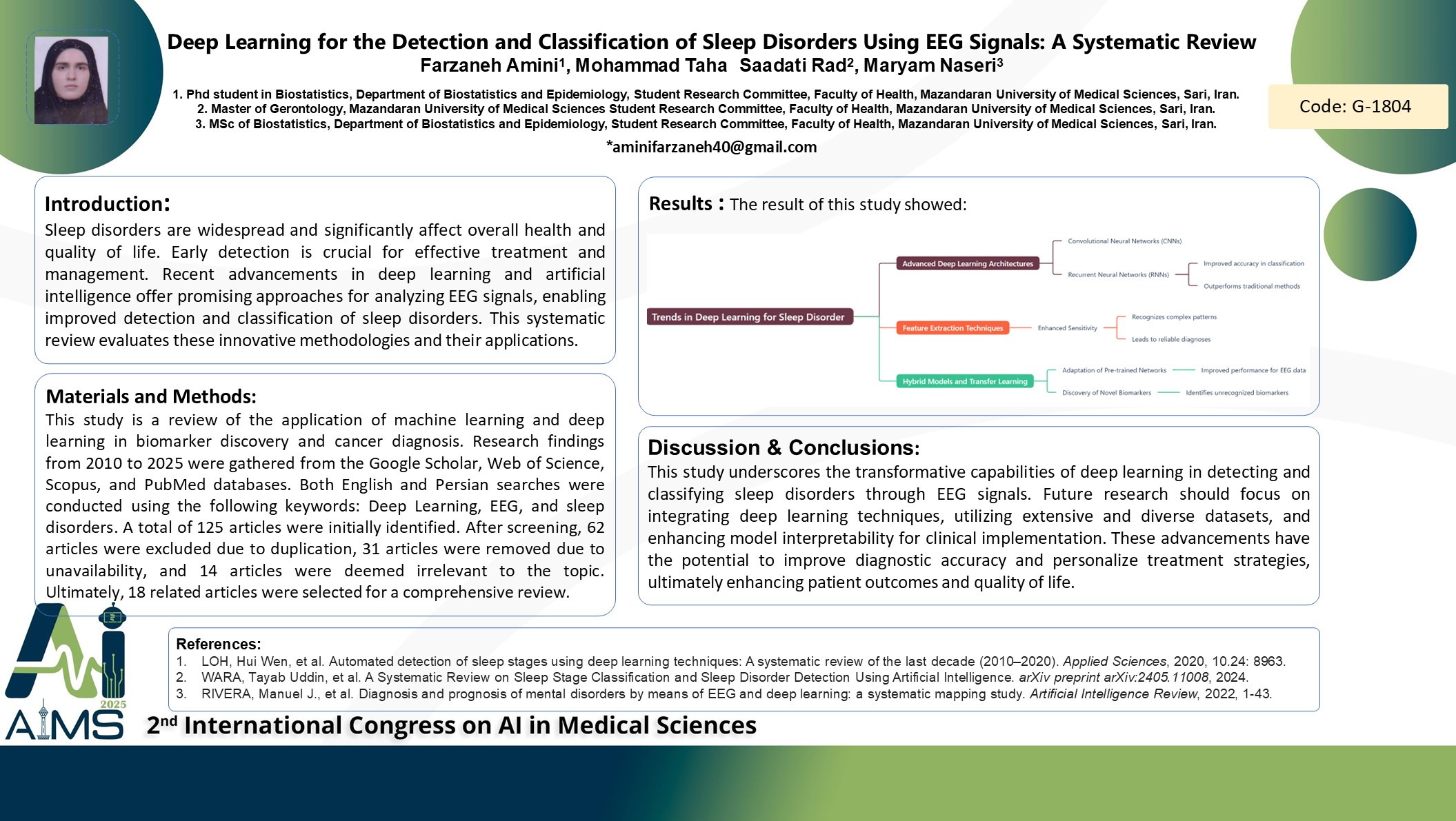Deep Learning for the Detection and Classification of Sleep Disorders Using EEG Signals: A Systematic Review
Code: G-1804
Authors: Farzaneh Amini * ℗, Mohammad Taha Saadati Rad, Maryam Naseri
Schedule: Not Scheduled!
Tag: Biomedical Signal Processing
Download: Download Poster
Abstract:
Abstract
Background and aims: Sleep disorders are widespread and significantly affect overall health and quality of life. Early detection is crucial for effective treatment and management. Recent advancements in deep learning and artificial intelligence offer promising approaches for analyzing EEG signals, enabling improved detection and classification of sleep disorders. This systematic review evaluates these innovative methodologies and their applications. Method: This study is a review of the application of machine learning and deep learning in biomarker discovery and cancer diagnosis. Research findings from 2010 to 2025 were gathered from the Google Scholar, Web of Science, Scopus, and PubMed databases. Both English and Persian searches were conducted using the following keywords: Deep Learning, EEG, and sleep disorders. A total of 125 articles were initially identified. After screening, 62 articles were excluded due to duplication, 31 articles were removed due to unavailability, and 14 articles were deemed irrelevant to the topic. Ultimately, 18 related articles were selected for a comprehensive review. Results: The review identified three key trends in the application of deep learning for the detection and classification of sleep disorders using EEG signals. First, advanced deep learning architectures, particularly Convolutional Neural Networks (CNNs) and Recurrent Neural Networks (RNNs), significantly improved the accuracy of sleep disorder classification compared to traditional methods. Second, feature extraction techniques utilizing deep learning demonstrated enhanced sensitivity in recognizing complex patterns associated with various sleep disorders, leading to more reliable diagnoses. Third, the integration of hybrid models and transfer learning facilitated the adaptation of pre-trained networks for EEG data, resulting in improved performance and the discovery of novel biomarkers not previously identified. These findings underscore the potential of deep learning methodologies to transform the diagnosis and management of sleep disorders. Conclusion: This study underscores the transformative capabilities of deep learning in detecting and classifying sleep disorders through EEG signals. Future research should focus on integrating deep learning techniques, utilizing extensive and diverse datasets, and enhancing model interpretability for clinical implementation. These advancements have the potential to improve diagnostic accuracy and personalize treatment strategies, ultimately enhancing patient outcomes and quality of life.
Keywords
Deep Learning, EEG, Sleep Disorders
